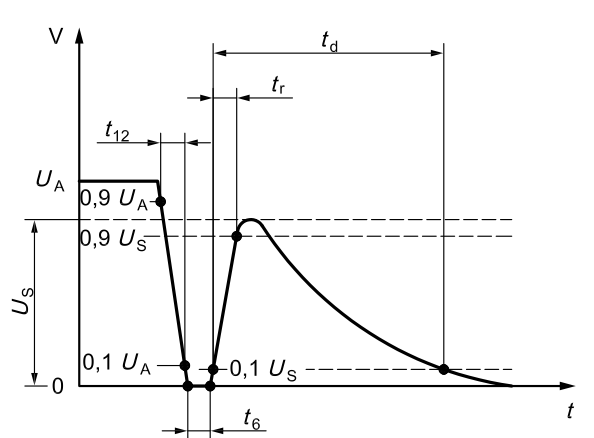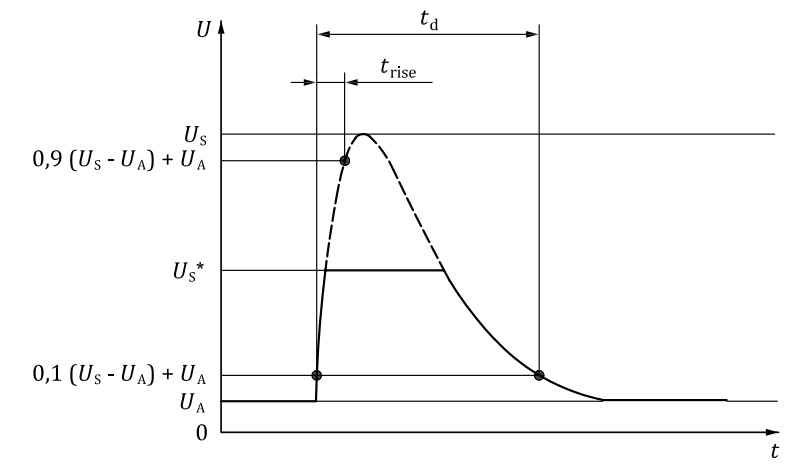Cars have become the most important transportation nowadays and the safety of each vehicle is the most important. The electromagnetic disturbance caused by the normal operation of the vehicle will lead to the reduction of the functions, short-term failures, and even permanent damage of various on-board electronic products through conductive coupling.
The on-board electronic transient interference simulation test system meets the requirements of the new and old version standards of ISO 7637-2 and ISO 16750-2, which is the best choice for anti-interference testing of all kinds of vehicle electronic products. The transient immunity test pulses include 1, 2, 2a, 2b, 3a, 3b, 4, 5a, 5b and other pulses, for nearly all standards and vehicle manufacturer specification requirements. These transient pulses apply to and are required for, ensuring the compatibility of components and devices to conduct transient pulses installed on vehicles fitted with a 12V or 24V electrical system.
EMCSOSIN self-developed RV series automotive transient system can perform the testing required for these transient immunity test pulses.
Below are the definitions of each pulse.
- Transient Immunity test pulse 1
This test is a simulation of transients due to supply disconnection from inductive loads.

Test pulse 1
- Transient Immunity test pulse 2a
This test simulates transients due to sudden interruption of currents in a device connected in parallel with the DUT due to the inductance of the wiring harness.

Test pulse 2a
- Transient Immunity test pulse 2b
This test simulates transients from DC motors acting as generators after the ignition is switched off.

Test pulse 2b
- Transient Immunity test pulses 3a and 3b
These test pulses are a simulation of transients, which occur as a result of the switching processes. The characteristics of these transients are influenced by distributed capacitance and inductance of the wiring harness.

Test pulse 3a

Test pulse 3b
- Transient Immunity test pulse 4
This test simulates supply voltage reduction caused by energizing the starter-motor circuits of internal combustion engines, excluding spikes associated with starting.
- Transient Immunity test pulses 5a and 5b
This test is a simulation of load dump transient, occurring in the event of a discharged battery being disconnected while the alternator is generating charging current and with other loads remaining on the alternator circuit at this moment; the load dump amplitude depends on the alternator speed and the level of the alternator field excitation at the moment the battery is disconnected.

Test A – without centralized load dump suppression

Test B – with centralized load dump suppression
The test pulses 4, 5a, and 5b have been removed from ISO 7637-2 standard and specified in ISO 16750-2 and ISO 21848 standard.
ISO 16750-2 test pulse
- Direct current (DC) supply voltage
- Overvoltage
- Superimposed alternating voltage
- Slow decrease and increase of supply voltage
- Discontinuities in supply voltage
- Reversed voltage
- Ground reference and supply offset
- Open circuit tests
- Short circuit/overload protection
- Withstand voltage
- Insulation resistance
Some of the standards requiring these transient test pulses for products used in vehicles listed below
- Audi (Reference vehicles)
- BMW GS 95024-2-1(2010-01)
- Chrysler CS-11809(2009)
- Chrysler CS-11979
- Chrysler DC-11224 Rev.A
- BMW GS 95002(2001)
- ISO 7637-2
- ISO 7637
- ISO 16750-2
- EN 301 489-1
- EN 301 489-17
- BMW 600 13.0 (Part 1)
- BMS GS 95002
- BMS GS 95003-2
- BMS GS 95024-2-1
- VW 8000
- VS-00.35-L-10008
Please do not hesitate to contact EMCSOSIN for a quote today.







